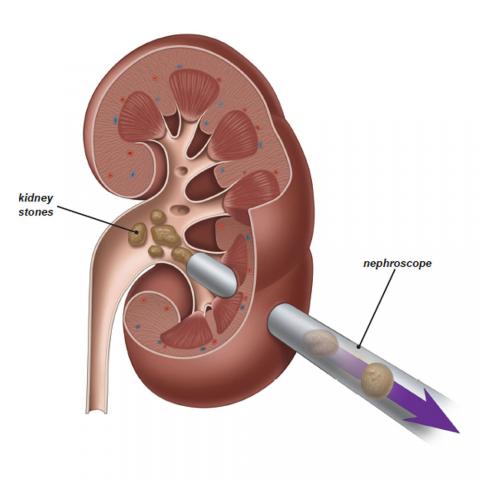
This procedure involves making a hole through the skin, through the muscles and through the outside portion of the kidney in order to gain access to the inside of the kidney where stones are located. The procedure is performed under a general anaesthetic and takes 1-3 hours. X rays are taken at the time of the operation to guide access into the kidney. A telescope is used to inspect the inside of the kidney to find the stone or stones and under direct vision the stones are fragmented and the pieces removed.
A nephrostomy tube is left in the kidney through the puncture in the skin to facilitate drainage of blood, urine and stone fragments for a day or two. Patients are generally hospitalized for 2-4 days.
PCNL is generally used for larger kidney stones (greater than 20 mm) and most staghorn calculi. It was previously used for 10-20 mm kidney stones but this is becoming rarer as these type of calculi are more often treated now using ureteropyeloscopy.
The advantage of PCNL is that it has a high likelihood of eradication even extensive kidney stone disease with a single operation.
The disadvantage of PCNL is that because a hole is needed through the kidney, there is a risk of bleeding which is sometimes very serious. Bleeding may require further a blood transfusion or intervention to control the blood loss and rarely results in a need to remove the entire kidney. There is also a small risk of damaging other structures around the kidney such as the spleen, liver, bowel, lung or large blood vessels. There is a risk of serious infection and patients may require intravenous antibiotics prior to or after a PCNL.









